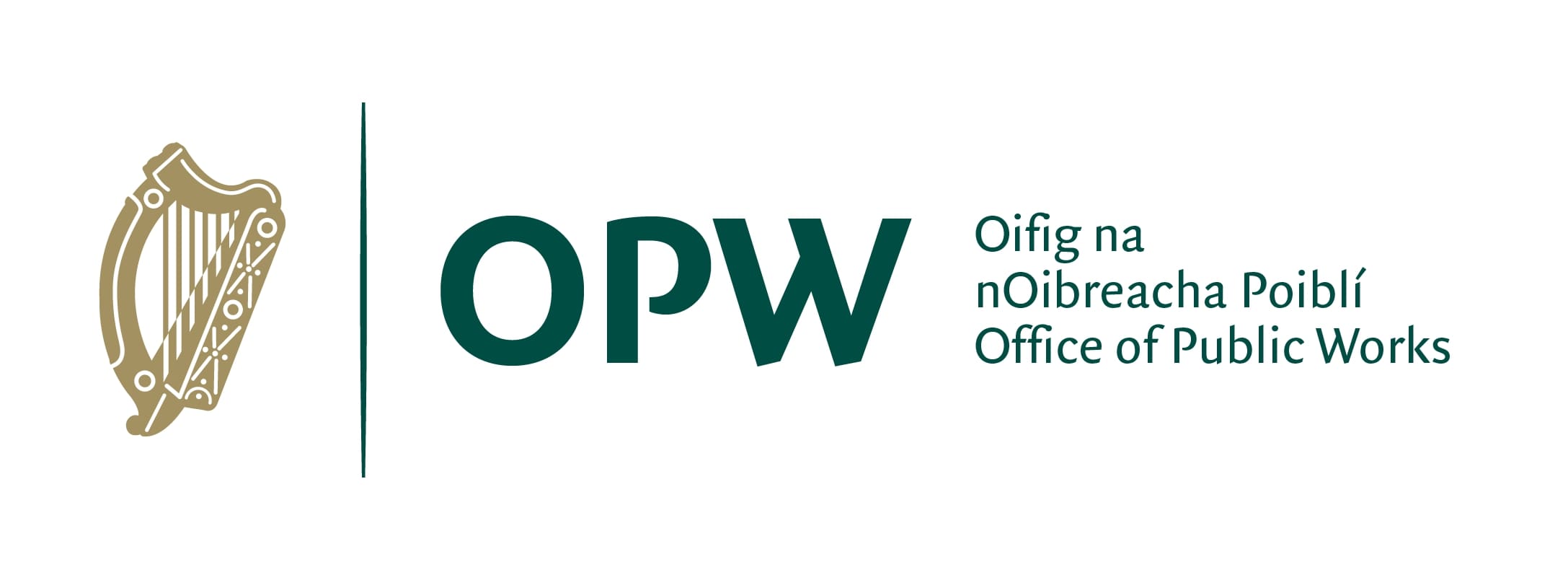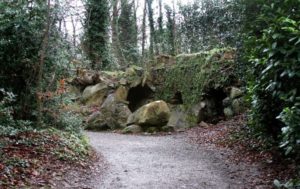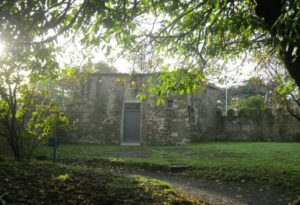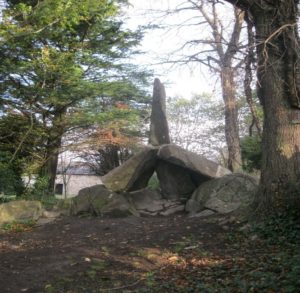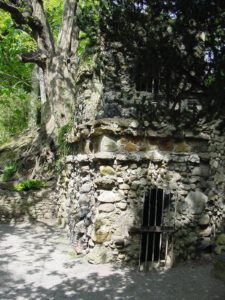
The Follies of St. Enda’s Park
More people visit St. Enda’s Park in these pandemic times than ever before. Many notice the follies dotted around the park and probably wonder what these funny little buildings are all about. Follies are officially described as:
“A Folly is a building constructed for, aesthetic pleasure, decoration on the landscape, entertainment, amusement and fun”.
A 21st century public park offers amenities such as pathways for walking, playgrounds for children, some have areas for allowing dogs off leads, walled gardens with seating and usually a coffee shop somewhere within the park. 18th/19th century parks/parkland like St. Enda’s were privately owned and organised in a way to suit the owners and their guests. St. Enda’s / The Hermitage as it was then called was no exception.
The house was built in 1786 by Dublin dentist Edward Hudson on land known as “The Fields of Odin” renamed by Hudson as “The Hermitage”. Over time a series of follies inspired by ancient Irish field monuments were added to the grounds, perhaps by Edward’s son William Eliot Hudson born at the Hermitage in 1796, interested in antiquities and mythology, founder the Irish Archaeological Society in 1840 and the Celtic Society in 1845. The choice of follies which echo Ireland’s ancient past would seem fit with Hudson’s interests.
Throughout the late 18th and early 19th century follies were a fashionable addition to a garden or demesne. Major Doyne who was owner of the house in the 1860’s is said to have erected an obelisk in memory of the horse that carried him safely through battle in the Crimean war. Patrick Pearse moved his school, Scoil Éanna, to Rathfarnham in 1910 and seems to have been very taken with the idea of it being a ‘Hermitage’ and a retreat from the city, nestling in the foothills of the Dublin mountains. The Hudsons actually went so far as to build a Hermit’s Cave, complete with mysterious arcane carvings and a secluded stone seat for contemplation. In June 1913 Pearse began a series of articles in the Irish Freedom newspaper which he entitled “From A Hermitage”. He began by saying “I have only two qualities in common with the real (or Imaginary) hermit who once lived (or did not live) in this place: I am poor and I am merry”. The articles were published monthly, with the final one appearing in January 1914. In them Pearse reflected on the current state of Ireland and what Irish people needed to do to obtain their freedom.
Over time many of the follies began to fall into disrepair. Many people who visit the museum tell stories of their childhood and what an adventure it was to sneak into the park, running through the overgrown areas looking for excitement. In 1970 the house and grounds were handed over to the state, the house became The Pearse Museum/Músaem na bPiarsach and the grounds St. Enda’s National Historic Park.
In the run up to the anniversary of the 1916 Rising a report was prepared for the Office of Public Works, by Howley Hayes Architects with special emphasis on “the conservation of the built heritage of St. Enda’s National Historic Park. It examined the historical development of the site, with its important designed landscape and ornamental garden structures”. The first step was to uncover the ruins to see how much work was needed. We who work in St. Enda’s were amazed to see what was hidden beneath the ivy, shrubs and sprouting trees. The Hermit’s Cave as an example when exposed was a much bigger construction then we ever imagined. A large walk in but ‘mind your head’ chamber with room for 4/5 adults standing. The remains of a castellated effect to the roof at the front was restored and stonework repaired.
Similarly, the star shaped Emmet’s Fort contained four separate rooms with a central fireplace, a door at the front and side of the building, a third door leading to a tiny back yard and a wonderful view of Dublin from the roof. It was probably originally built as a house for grounds staff, however research revealed that in the 1920s Patrick Pearse’s step-sister, Mary Emily MacGloughlin came to live there with her son and two daughters and died there in 1944. We are told Éamon De Valera the then Taoiseach came to pay his respects to Emily’s family at the Fort. Further research revealed that the fort was occupied up until the 1960s.
Follies come in all shapes and sizes and the Cromlech is no exception. Following an attack by vandals it had to be deconstructed in the late 1990s and for many years it looked like an unremarkable collection of stones on the ground. With the help of a drawings and photos, the Cromlech was restored to its original glory. Walking by the Cromlech in these times children can be seen playing around it, posing for photographs and generally enjoying climbing on it.
The folly by the Whitechurch stream is known as the Tower or the Temple. It is a decorative building with a practical purpose, an architectural device used to change levels from the lower path beside the pond to the upper path. Originally there was a third set of steps leading up to the rooftop viewing platform of the tower (now changed for safety reasons). During the renovation of the tower a lower/basement level was discovered that had contained a 19th pumping system which may have been used to pump water to the fountain in the nearby walled garden. From the far side of the stream there is a clear view of the different types of stone and the decorative way it is used on the building.
